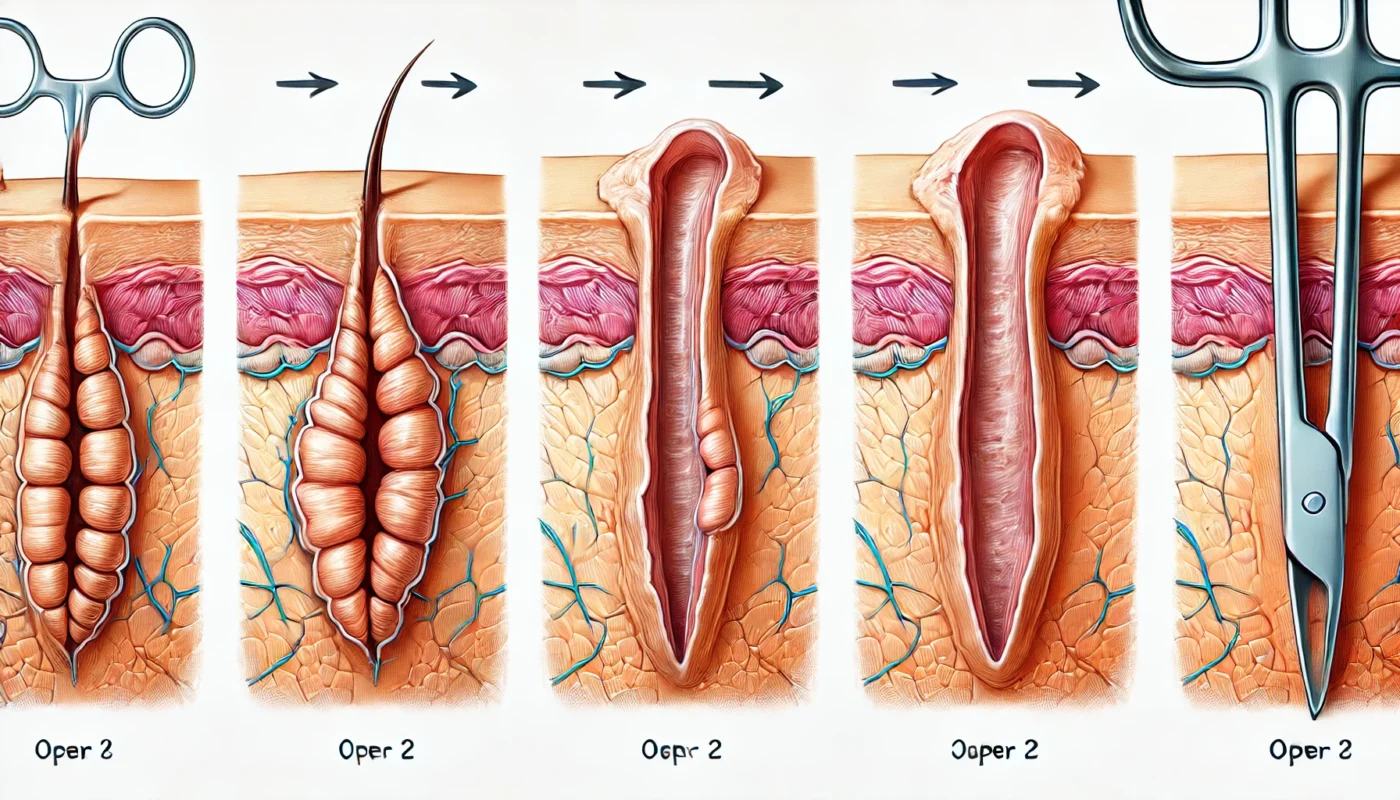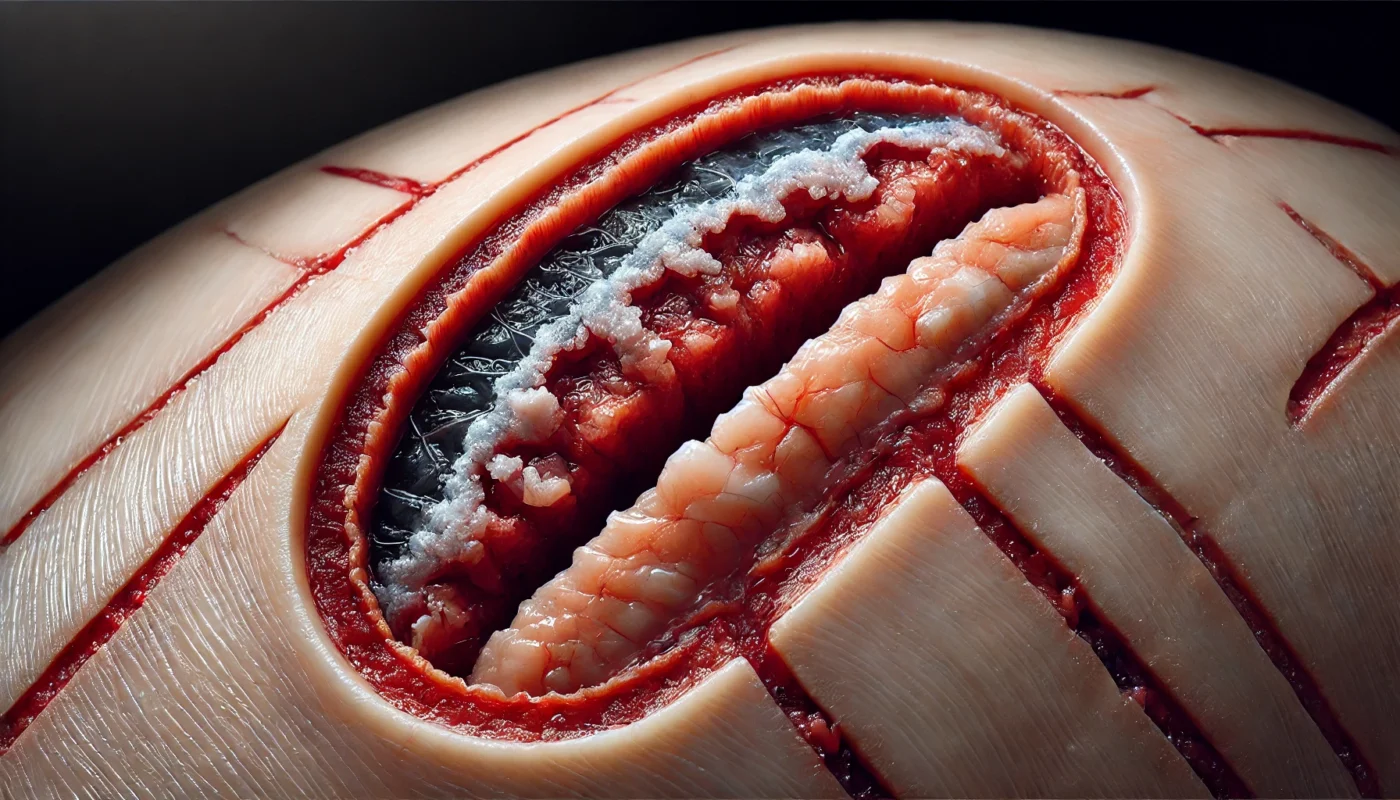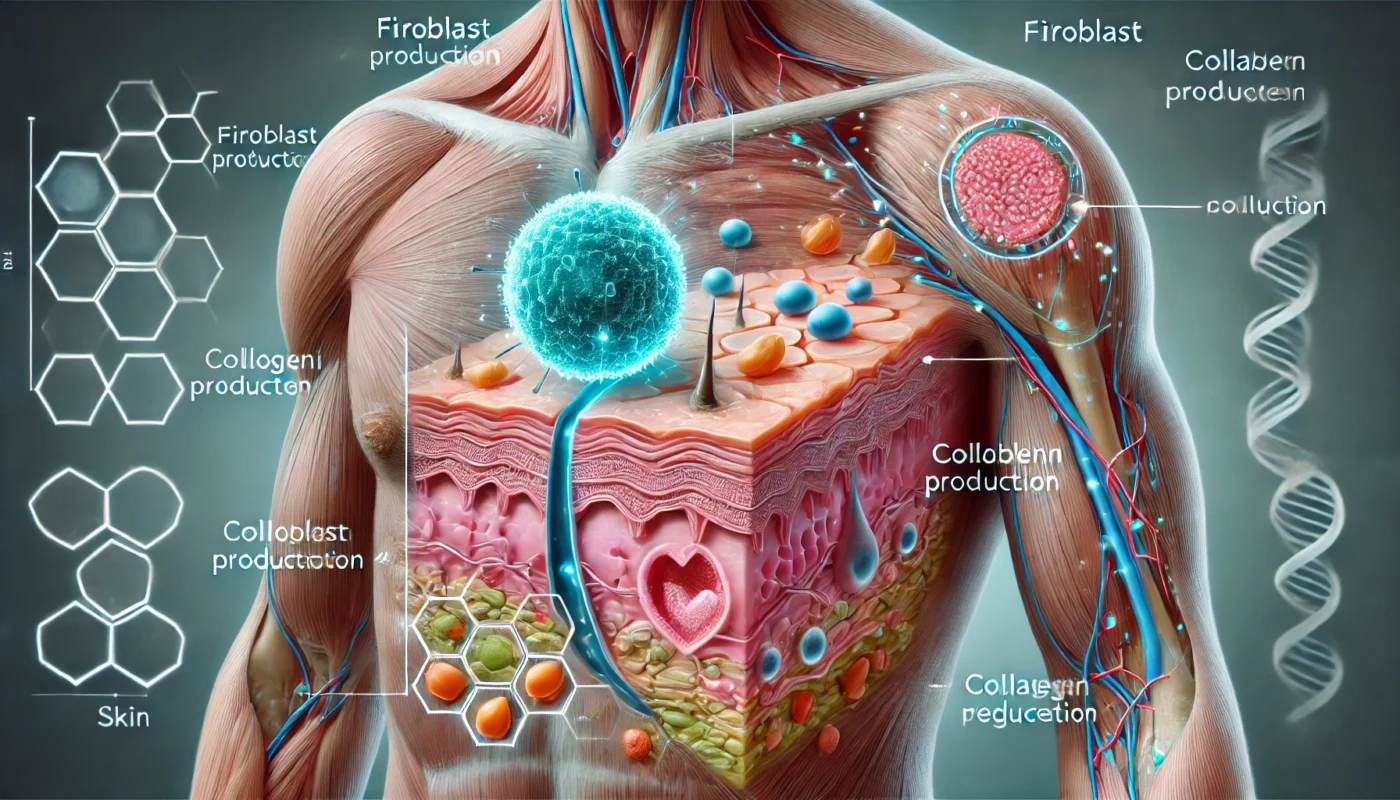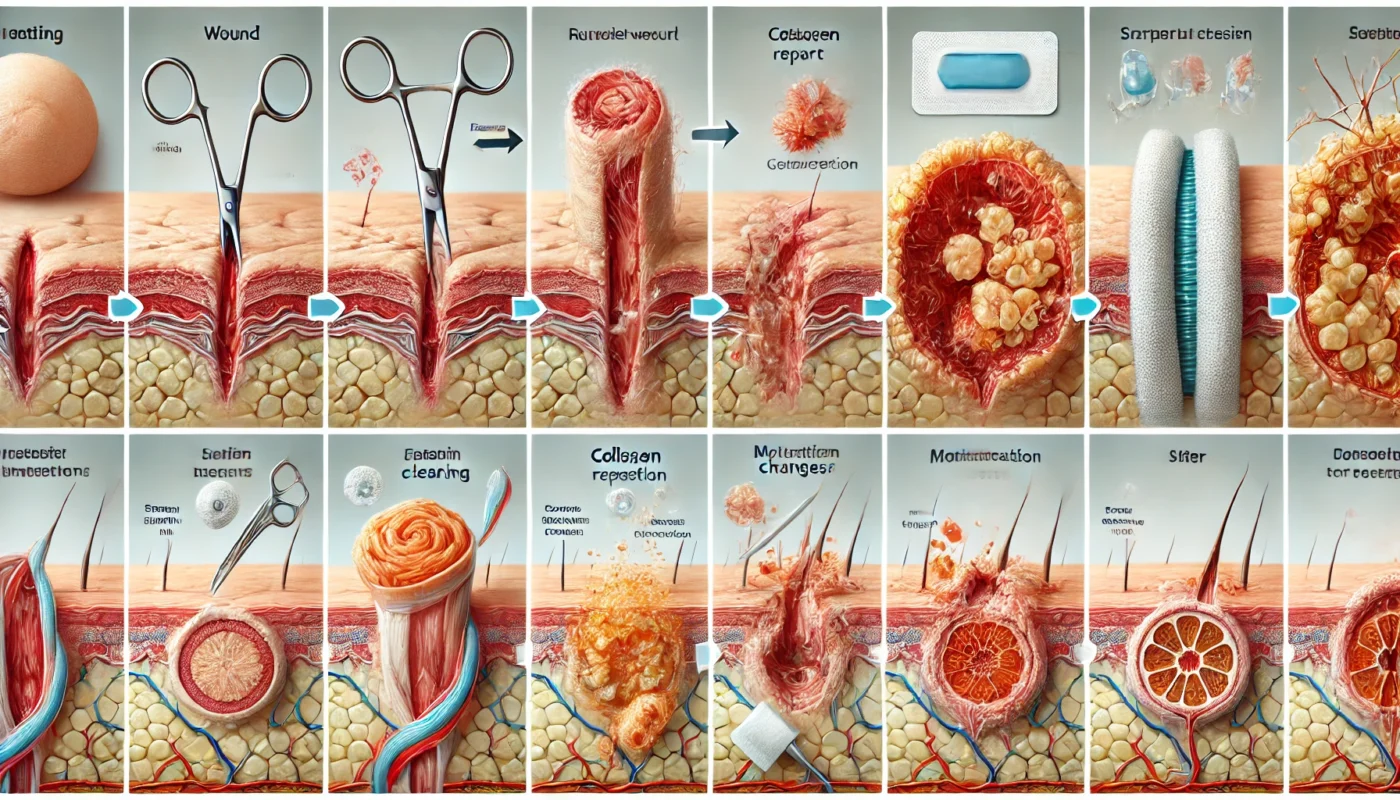Surgical incisions are cuts made by a surgeon during an operation to access the area of the body that requires treatment. The healing of these incisions is a complex process influenced by a variety of factors, including the type of surgery performed, the patient’s overall health, and post-operative care practices.
You may also like: Key Factors in Proliferative Wound Healing
The Healing Timeline
The timeline for surgical incision healing varies significantly depending on several factors. Generally, superficial skin healing can take a few weeks, whereas deeper tissues may require months to heal completely. Here’s a breakdown of the typical stages:
Hemostasis (Immediate Post-Surgery)
The body’s first response to an incision is hemostasis. This is a critical phase where the body works to stop bleeding and begin the clotting process. During this stage, blood vessels constrict to reduce blood flow, and platelets aggregate to form a clot. This process generally happens within minutes to hours after surgery, setting the foundation for subsequent healing stages. The success of hemostasis is vital for preventing excessive blood loss and setting the stage for tissue repair.
Inflammation (Days 1-6)
Inflammation is the body’s natural response to injury and is characterized by redness, swelling, and warmth. During this phase, white blood cells, particularly neutrophils and macrophages, are dispatched to the incision site. Their role is to fight infection and begin the healing process by cleaning up debris and bacteria. This phase, though often uncomfortable, is crucial as it prepares the wound for the growth of new tissue. Proper management of inflammation through medication and rest is essential for minimizing discomfort.
Proliferation (Days 4-24)
In the proliferation stage, the body starts the process of rebuilding. This phase involves the formation of new tissue as collagen synthesis begins, and granulation tissue forms. Fibroblasts play a key role by producing collagen, which provides strength and structure to the healing tissue. Additionally, angiogenesis, the formation of new blood vessels, ensures a sufficient blood supply to the area. This stage is marked by a visible reduction in wound size and the gradual closure of the incision.
Maturation (Up to a Year)
The final stage of healing is maturation, where the wound strengthens and remodels. During this phase, collagen fibers reorganize, and the incision’s appearance gradually improves, becoming smoother and less pronounced. This stage can take several months to a year, depending on the individual and the complexity of the surgery. The goal is to achieve optimal tissue tensile strength and function while minimizing scarring. Patients are encouraged to maintain healthy habits and follow medical advice to support this long-term healing process.
Factors Influencing Healing
Type of Surgery
The nature of the surgery itself plays a crucial role in the healing process. Different surgical techniques result in varying degrees of tissue trauma, influencing recovery times and outcomes.
Laparoscopic vs. Open Surgeries
Laparoscopic procedures, which involve small incisions and the use of a camera, typically result in faster healing times compared to open surgeries, which require larger incisions. The smaller incisions in laparoscopic surgery mean less tissue damage and reduced risk of infection, leading to quicker recovery. Patients undergoing laparoscopic surgery often experience less post-operative pain and shorter hospital stays.
Emergency vs. Elective Surgeries
Emergency surgeries, performed in urgent situations, may present challenges due to the lack of pre-operative preparation and potential for greater tissue trauma. Elective surgeries, on the other hand, allow for better planning and optimization of the patient’s health prior to the procedure. This preparation can significantly influence the healing process, as patients have time to address factors like nutrition and smoking cessation.
Surgical Technique and Expertise
The surgeon’s technique and expertise also impact healing outcomes. Surgeons with specialized training in minimally invasive techniques and advanced suturing methods can minimize tissue trauma and improve cosmetic results. Choosing a surgeon with a strong track record and experience in the specific procedure can positively influence the recovery process.
Patient’s Overall Health
A patient’s overall health significantly impacts healing. Factors such as age, nutritional status, pre-existing medical conditions, and lifestyle choices (like smoking) can either facilitate or hinder recovery.
Age and Healing
Age is a significant factor in recovery, as older patients may experience slower healing due to decreased skin elasticity and reduced immune function. Younger patients typically heal faster as their bodies are more resilient and capable of efficient cell regeneration. However, older adults can enhance their healing potential by maintaining a healthy lifestyle and addressing underlying health conditions prior to surgery.
Nutrition and Immune Function
Nutritional status plays a critical role in the healing process. Adequate intake of essential nutrients like protein, vitamin C, and zinc supports tissue repair and immune function. Malnutrition or deficiencies can delay healing and increase susceptibility to infections. Patients are encouraged to follow a balanced diet and consider supplements if recommended by their healthcare provider.
Pre-existing Medical Conditions
Conditions such as diabetes, cardiovascular disease, and obesity can complicate the healing process. These conditions may impair circulation, reduce immune response, and increase the risk of complications. Managing these conditions through medication, lifestyle changes, and regular medical check-ups is essential for promoting optimal recovery.
Post-Surgical Care
Proper wound care is critical for preventing infection and promoting healing. This includes following your healthcare provider’s instructions on cleaning, dressing changes, and activity restrictions.
Wound Cleaning and Dressing Changes
Regular wound cleaning and appropriate dressing changes are essential for preventing infection and promoting a healthy healing environment. Patients should follow their healthcare provider’s instructions on how to clean the incision and change dressings. Using sterile materials and adhering to recommended schedules helps minimize infection risk and supports tissue repair.
Activity Restrictions and Gradual Increase
Post-surgical care often involves activity restrictions to prevent strain on the incision site. Patients should avoid heavy lifting, strenuous activities, and any movements that could disrupt the healing process. Gradually increasing activity levels, as advised by the healthcare provider, is crucial for promoting circulation and aiding recovery.
Monitoring for Complications
Patients should be vigilant in monitoring their incision sites for signs of complications, such as increased redness, swelling, or discharge. Early detection of issues like infection or dehiscence (wound reopening) allows for prompt medical intervention. Maintaining open communication with the healthcare team and attending follow-up appointments are integral parts of post-surgical care.

Common Post-Surgery Concerns
Incision Pain and Discomfort
It is not uncommon to experience incision pain 3 weeks after surgery. Pain can stem from the normal healing process, but it’s crucial to monitor the severity and consult with a healthcare provider if the pain is intense or worsening.
Managing Pain through Medication
Pain management is a crucial aspect of the recovery process. Patients are often prescribed pain medications to alleviate discomfort during the initial healing stages. It’s important to follow the prescribed regimen and not exceed recommended dosages. Proper pain management allows patients to engage in necessary activities and rehabilitation exercises without undue discomfort.
Non-Pharmacological Pain Management
In addition to medication, non-pharmacological methods can be effective in managing pain. Techniques such as deep breathing, meditation, and guided imagery can help reduce stress and promote relaxation. Applying cold or warm compresses, as advised by the healthcare provider, may also alleviate pain and swelling. Patients should explore these complementary methods to enhance their overall pain management strategy.
Recognizing Abnormal Pain
While some pain is expected post-surgery, persistent or severe pain that does not respond to medication may indicate a complication. Patients should be aware of signs that warrant medical attention, such as sharp, localized pain, increased swelling, or redness. Consulting with a healthcare provider ensures timely intervention and prevents further issues.
Burning Sensation
A burning sensation at the surgical incision site can be a normal part of healing, related to nerve regeneration. However, persistent or severe burning requires medical attention to rule out complications like infection.
Nerve Regeneration Process
As part of the healing process, nerve endings near the incision site may regenerate, leading to a tingling or burning sensation. This is a sign that the body is repairing itself and is typically temporary. Patients may experience varying degrees of sensation as nerves reconnect and adapt.
Differentiating Normal from Abnormal Sensations
Understanding the difference between normal healing sensations and potential complications is important. Mild burning or tingling is usually normal, but severe or persistent sensations may indicate nerve damage or infection. Patients should monitor the intensity and duration of these sensations and report any concerns to their healthcare provider.
Managing Sensations with Care
To manage uncomfortable sensations, patients can apply topical creams or ointments as recommended by their healthcare provider. Gentle massage around the incision area may also help alleviate discomfort and promote blood flow. Ensuring proper wound care and avoiding tight clothing over the incision can prevent irritation and support healing.
Infection Signs
It’s essential to check your incision regularly for signs of infection, such as increased redness, swelling, warmth, or discharge. Fever is another indicator that warrants immediate medical evaluation.
Identifying Early Infection Symptoms
Early identification of infection symptoms is crucial for prompt treatment. Patients should look for increased redness, swelling, warmth, or pus-like discharge from the incision site. These signs, along with fever or chills, indicate a possible infection that requires medical attention.
Preventive Measures Against Infection
Preventing infection starts with proper wound care and hygiene. Patients should follow instructions on cleaning the incision and changing dressings. Avoiding contact with contaminated surfaces and keeping the wound dry are additional preventive measures. Adhering to prescribed antibiotic regimens, if applicable, is essential for reducing infection risk.
Responding to Suspected Infection
If infection symptoms are detected, patients should seek medical advice promptly. Delaying treatment can lead to complications and prolonged recovery. Healthcare providers may prescribe antibiotics or recommend additional interventions to address the infection and promote healing.
Healing from the Inside Out
A surgical wound often heals from the inside out. This means that deeper tissues will repair before the outer skin layer fully closes. It’s important to be patient and allow time for this internal healing to occur.
Understanding the Healing Layers
Surgical wounds heal in layers, starting with the deepest tissues. The body prioritizes repairing internal structures before closing the skin surface. This approach ensures that the foundation of the wound is strong and stable, reducing the risk of complications. Patients should be aware that the outer appearance of the incision may not reflect the progress of internal healing.
Patience in the Healing Process
Patience is a key component of the healing journey. While the outer skin may appear healed, internal tissues continue to strengthen and remodel over time. Patients should follow their healthcare provider’s guidelines and avoid rushing into activities that could disrupt the healing process. Allowing ample time for complete recovery is essential for achieving the best outcomes.
Supporting Internal Healing
Supporting internal healing involves maintaining a healthy lifestyle and adhering to medical advice. Adequate nutrition, hydration, and rest are vital for providing the body with the resources it needs to repair tissues. Patients should also avoid smoking and manage stress levels to facilitate optimal healing from the inside out.

Practical Tips for Optimal Healing
Nutrition and Hydration
A balanced diet rich in vitamins and minerals supports the body’s healing processes. Key nutrients include protein, vitamin C, and zinc, which are vital for tissue repair and immune function. Staying hydrated is equally important for overall health and wound healing.
Importance of a Nutrient-Rich Diet
A nutrient-rich diet provides the building blocks necessary for tissue repair and immune function. Protein is essential for cell regeneration, while vitamins like C and E play a role in collagen synthesis and antioxidative protection. Zinc supports immune response and wound healing. Patients should focus on a balanced diet with a variety of fruits, vegetables, lean proteins, and whole grains.
Hydration’s Role in Recovery
Staying hydrated is crucial for maintaining bodily functions and supporting the healing process. Adequate fluid intake helps transport nutrients to cells, remove waste products, and maintain skin elasticity. Patients should aim to drink plenty of water and limit caffeine and alcohol, which can dehydrate the body.
Supplements and Nutritional Support
In some cases, supplements may be recommended to address specific nutritional needs. Patients should consult their healthcare provider before starting any supplements to ensure they are appropriate and safe. Nutritional support through specialized diets or meal plans may also be beneficial for those with dietary restrictions or specific health conditions.
Rest and Activity
Allowing your body adequate rest post-surgery is critical. Follow your healthcare provider’s guidance on activity levels, gradually increasing movement as advised. Gentle exercises, like walking, can promote circulation and aid recovery.
The Balance of Rest and Activity
Finding the right balance between rest and activity is key to a successful recovery. Rest allows the body to repair tissues and conserve energy, while gentle activity promotes circulation and prevents complications like blood clots. Patients should listen to their bodies and adjust activity levels based on comfort and progress.
Gradual Reintroduction of Exercise
As healing progresses, patients can gradually reintroduce exercise into their routines. Walking is an excellent low-impact activity that supports circulation and enhances overall well-being. Patients should follow their healthcare provider’s recommendations for increasing activity levels and avoid high-impact exercises until fully healed.
Importance of Sleep in Recovery
Quality sleep is an essential component of the healing process. During sleep, the body undergoes repair and regeneration, supporting immune function and tissue recovery. Patients should prioritize restful sleep by establishing a regular sleep schedule and creating a comfortable sleep environment.
Mindful Monitoring
Regularly inspect your incision site for any changes or signs of complications. Keep in contact with your healthcare team and report any concerns promptly.
Routine Inspection of Incision
Routine inspection of the incision site helps identify any changes or potential issues early on. Patients should look for changes in color, swelling, or discharge and document any observations. Maintaining a record of these changes can be helpful for healthcare providers in assessing the healing progress.
Open Communication with Healthcare Providers
Open communication with healthcare providers is crucial for addressing concerns and receiving guidance. Patients should feel comfortable discussing any questions or issues they encounter during recovery. Regular follow-up appointments provide opportunities for healthcare providers to monitor healing and make necessary adjustments to the care plan.
Responding to Changes Promptly
Responding promptly to any changes or concerns ensures that potential complications are addressed quickly. Patients should not hesitate to contact their healthcare provider if they notice unusual symptoms or have questions about their recovery. Timely intervention can prevent issues from escalating and support a smoother healing process.
Managing Pain
Pain management is an integral part of recovery. Follow prescribed pain medication regimens and explore additional methods, such as relaxation techniques or alternative therapies, to help manage discomfort.
Adhering to Pain Medication Regimens
Adherence to prescribed pain medication regimens is essential for effective pain management. Patients should follow dosage instructions and avoid skipping doses to maintain consistent pain control. Understanding the medication’s effects and potential side effects helps patients use it safely and effectively.
Exploring Alternative Pain Management Methods
Alternative methods, such as acupuncture, physical therapy, or chiropractic care, may complement traditional pain management strategies. Patients should discuss these options with their healthcare provider to ensure they are safe and appropriate. Incorporating a variety of pain management techniques can enhance overall comfort and support recovery.
Importance of Pain Management in Healing
Effective pain management plays a significant role in the healing process. By reducing discomfort, patients can participate in necessary activities and rehabilitation exercises, promoting circulation and tissue repair. Proper pain control also improves overall well-being and reduces stress, contributing to a more positive recovery experience.
Showering and Hygiene
Adhering to guidelines on when you can shower post-surgery is important to prevent infection. Typically, a healthcare provider will advise waiting until the incision is sufficiently healed and protected.
Timing and Technique for Showering
The timing for resuming showers post-surgery depends on the incision’s healing status and the type of surgery performed. Patients should follow their healthcare provider’s recommendations and use gentle techniques to clean the incision area. Avoiding direct water pressure and using mild, fragrance-free soaps helps protect the healing tissue.
Maintaining Hygiene While Protecting the Incision
Maintaining hygiene is important for preventing infection and promoting healing. Patients should focus on keeping the incision clean and dry, using protective coverings if necessary. Regular handwashing and avoiding contact with contaminated surfaces further reduce infection risk.
Addressing Concerns with Healthcare Providers
If patients have questions or concerns about hygiene practices, they should consult their healthcare provider. Healthcare providers can offer personalized advice and address any specific needs based on the patient’s condition and surgery type. Open communication ensures that patients receive the support they need for optimal recovery.

When to Seek Medical Advice
While minor issues can often be managed at home, certain symptoms necessitate prompt medical attention. These include signs of infection, severe pain, or sudden changes in the incision’s appearance. It’s always better to err on the side of caution and consult with your healthcare provider if you’re unsure.
Recognizing Serious Symptoms
Recognizing symptoms that require medical attention is crucial for timely intervention. Patients should be aware of signs such as excessive bleeding, severe pain, or unexpected changes in the incision’s appearance. Understanding when to seek medical advice helps prevent complications and supports a smoother recovery.
Importance of Prompt Medical Consultation
Prompt consultation with a healthcare provider ensures that any issues are addressed quickly and effectively. Delaying medical evaluation can lead to worsening symptoms and prolonged recovery. Patients should prioritize their health and reach out to their healthcare team whenever they have concerns.
Maintaining a Proactive Approach to Recovery
Maintaining a proactive approach involves staying informed about potential complications and following medical advice closely. Patients should engage in regular communication with their healthcare team and attend all scheduled appointments. Taking an active role in recovery empowers patients to optimize their healing process and achieve the best outcomes.
Conclusion
Understanding the factors affecting surgical incision recovery empowers you to take an active role in your healing journey. By focusing on proper care, nutrition, and communication with your healthcare team, you can optimize your recovery and return to your daily activities more swiftly and safely. Your health is a partnership between you and your healthcare providers, and staying informed is a vital part of that collaboration.
Remember, patience and adherence to medical advice are your best allies on the road to recovery. With the right approach, you can enhance the healing process and ensure a smooth transition back to normalcy. By actively participating in your recovery, you pave the way for a healthier and more resilient future.
Further Reading:
Understanding Surgical Incisions and How They Heal
hydration, recovery, post-surgery care, nutrition, pain management, exercise, sleep, hygiene, communication with healthcare providers, incision care, supplements, healing process, patient education, wellness, health tips
Important Note: The information contained in this article is for general informational purposes only, and should not be construed as health or medical advice, nor is it intended to diagnose, prevent, treat, or cure any disease or health condition. Before embarking on any diet, fitness regimen, or program of nutritional supplementation, it is advisable to consult your healthcare professional in order to determine its safety and probable efficacy in terms of your individual state of health.
Regarding Nutritional Supplements Or Other Non-Prescription Health Products: If any nutritional supplements or other non-prescription health products are mentioned in the foregoing article, any claims or statements made about them have not been evaluated by the U.S. Food and Drug Administration, and such nutritional supplements or other health products are not intended to diagnose, treat, cure, or prevent any disease.

